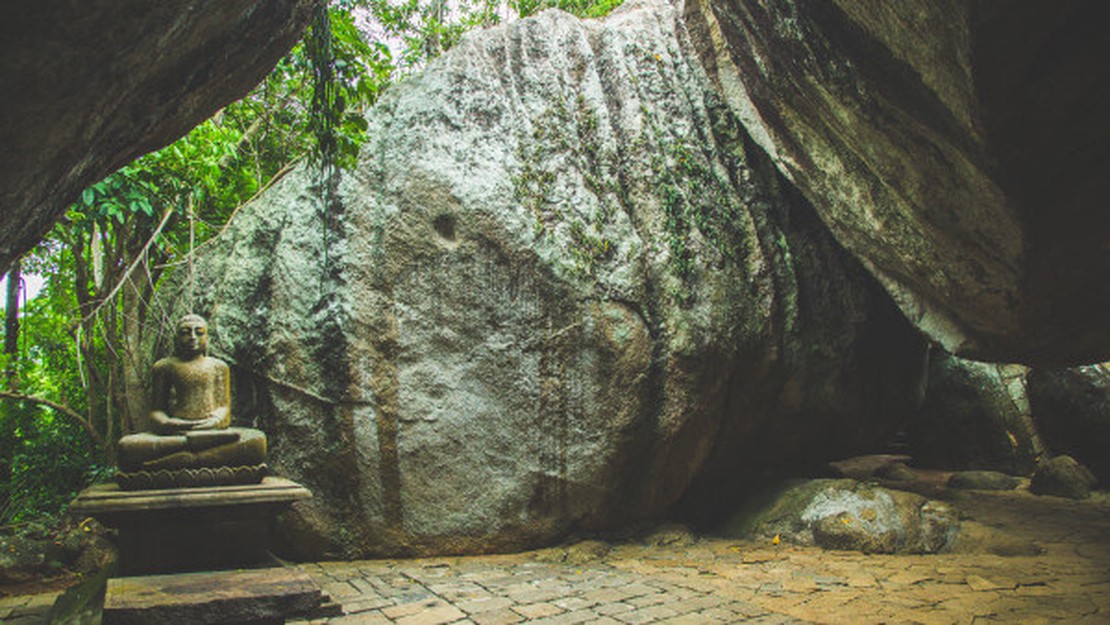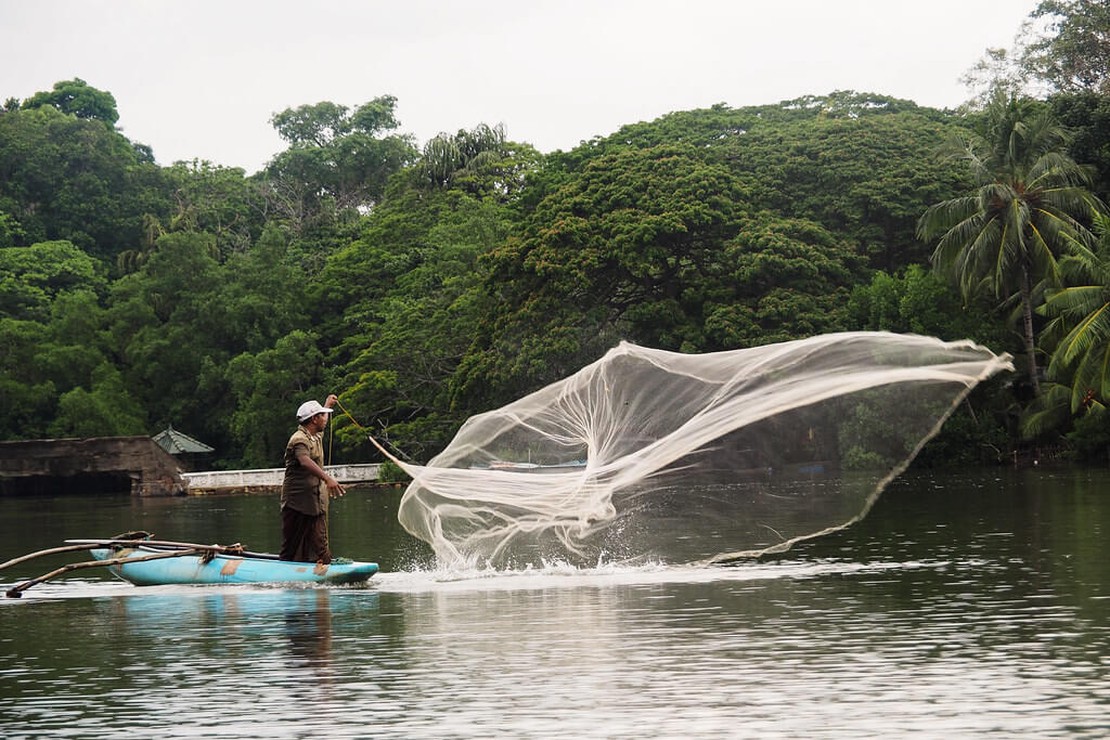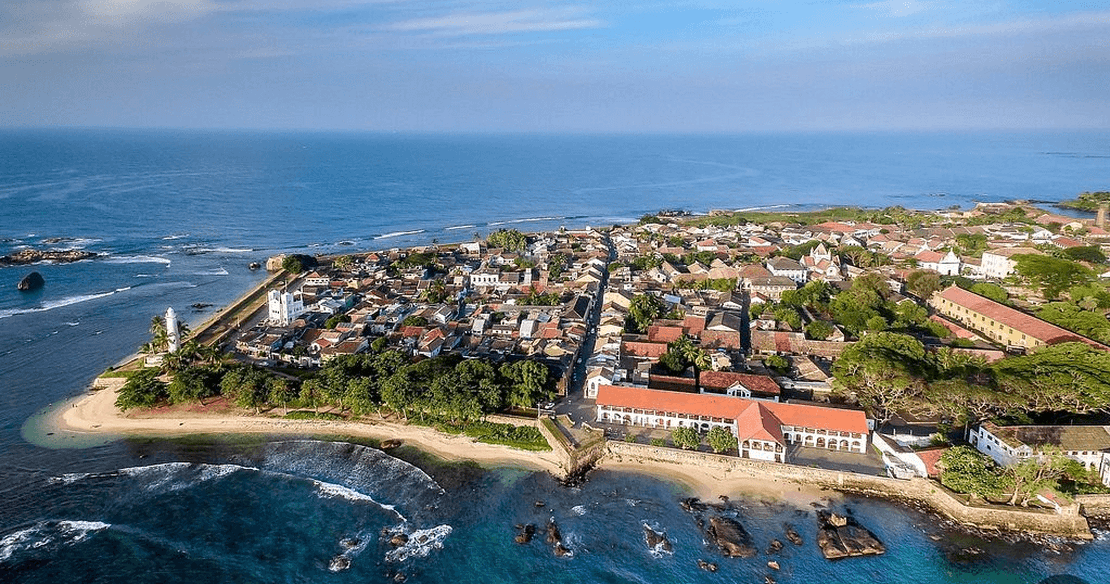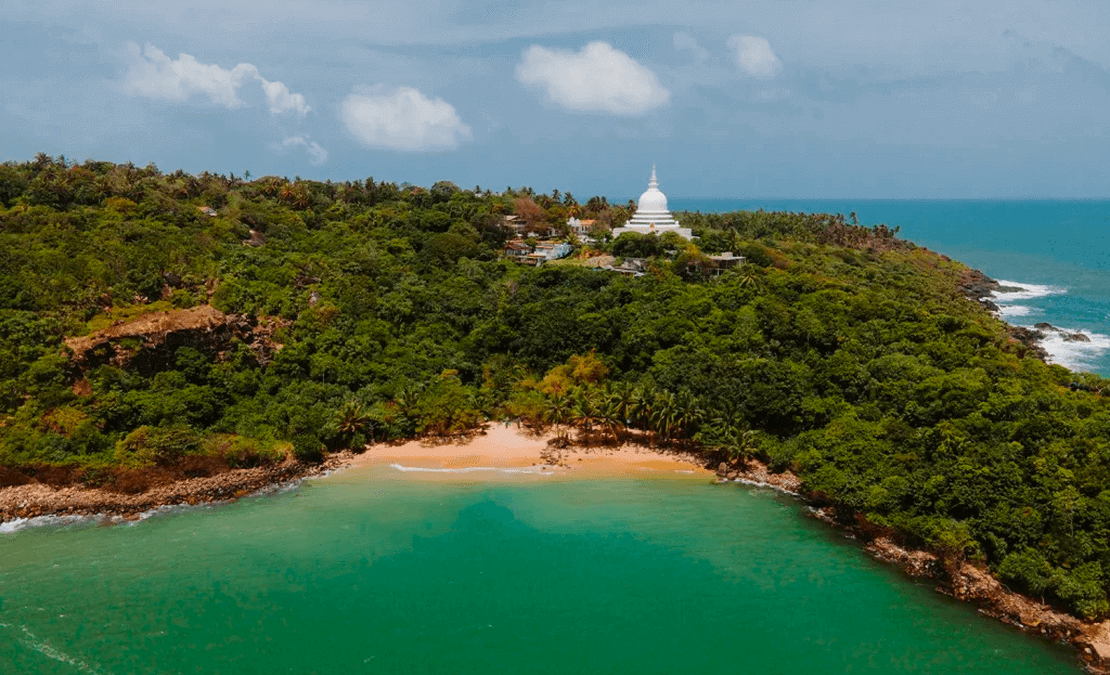
Yatagala Rock Temple - Rocks, Peace and Art
- Admin
- History and culture , Outdoor activities , Architecture
- September 21, 2023
Out of the many Buddhist historical sites in the South, Yatagala Rock Temple stands out as a place with a combination of exquisite Buddhist art and sculpture. The history of this massive temple complex runs back to the 13th Century, where a chief minister of the then ruler King Parakramabahu II, offered this temple with an 18 foot sleeping Buddha statue, frescoes and a sapling of the Sri Maha Bodhi, to the monks as a token of faith. Thus, most paintings and sculpture in the temple belong to the Dambadeniya and Kandyan traditions of art.
Located facing a large green paddy field, the temple area is a paradise of artistically formed rocks, that are present in the forms of caves, walls and ceilings. The image house with a rock ceiling that bears colorful frescoes done with natural paint is the most sought after location in the temple. The quiet Bodhi tree area bordered by massive rocks is equally famous as a meditation spot among spiritual travelers.
Currently, the temple is one of the largest Buddhist education centers in the island for young monks, where they study the ancient Buddhist scriptures and also common subjects in the school curriculum such as Mathematics, English, History and Sinhala.
Other things to do:
At the temple, an Anapanasathi meditation session under the rocks is highly recommended as it could be a life changing moment to sit in pin-drop silence, focusing on your breath and eventually thoughts. For photography lovers there is a range of themes from art to Buddhist way of life. If one wishes to combine this spiritual experience with a touch of adventure, there are two operators in the region; Chameera Cycling (Include Link) and Idle Bikes (Include Link) who offer cycling and kayaking tours. The cycling tour is usually a guided tour through the paddy fields and mangroves witnessing the typical Sri Lankan way of life and birds. The Kayaking is done in the Eluwila mangrove area, a shallow creek with a canopy of mangroves and rich wildlife.
When to visit:
Every day is a good day to visit Yatagala Temple. For those who need pin-drop silence, we recommend morning hours on weekdays (8.30 am- 11.00am). To witness Buddhist worshipping practices and rituals or even to take part in them, weekends and Poya days are highly recommended. We do not recommend visiting the temple during the mid-day as the rock staircase leading to the worship area and the worship area itself becomes red hot.
What to wear and carry:
There is a socially accepted dress code to visit Buddhist temples in Sri Lanka. This is usually a long dress (trousers for men / slacks or frock for women) and the idea is to cover the body. The ideal dress colour is white although you can wear any colour you have in your wardrobe. Visitors are advised to take off their headgear and slippers when entering the temple.
You can carry some flowers and incense to blend in with the locals. Taking photographs inside the image house is not permitted. Furthermore, posing for photos near Buddha statues is not recommended.
Accessibility:
There is a slightly steep flight of steps that lead to the worshipping area of the temple. Thus, the place is not wheelchair accessible. Bringing pets to the premises is not accepted. Apart from these restrictions, Yatagala Temple is an accessible place for everybody. The locals would always help in need for anyone with walking or climbing difficulties.
Where to wine and dine:
Since the Yatagala temple is located inland from the main tourist area, there is a hardly a restaurant to eat around the temple area. However, if you hit the main road (Galle – Matara Rd.), there are several places that are worth trying. Given below are two of the lesser known yet commendable restaurants which are just 10 minutes away from the temple.


